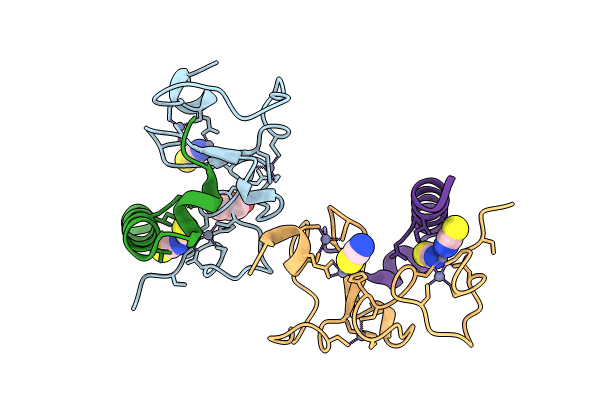
Deposition Date
2024-01-14
Release Date
2024-11-06
Last Version Date
2025-02-19
Entry Detail
PDB ID:
8XV6
Keywords:
Title:
Crystal structure of PHD domain of UHRF1 in complex with mStella peptide (residues 85-119)
Biological Source:
Source Organism:
Homo sapiens (Taxon ID: 9606)
Mus musculus (Taxon ID: 10090)
Mus musculus (Taxon ID: 10090)
Host Organism:
Method Details:
Experimental Method:
Resolution:
1.60 Å
R-Value Free:
0.16
R-Value Work:
0.15
R-Value Observed:
0.15
Space Group:
C 2 2 21


